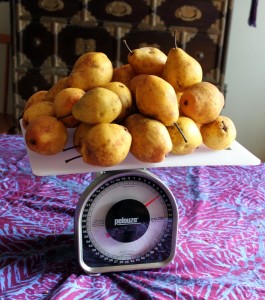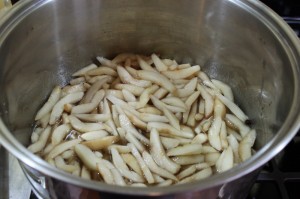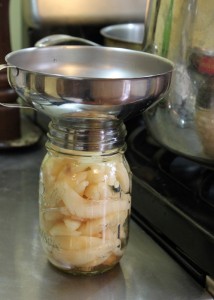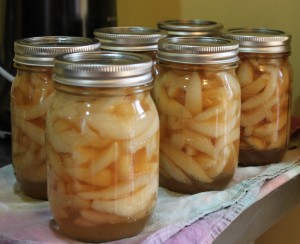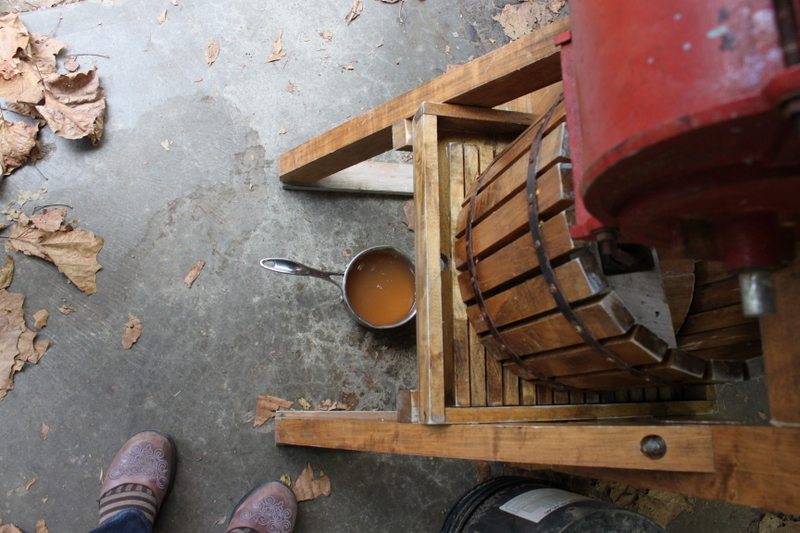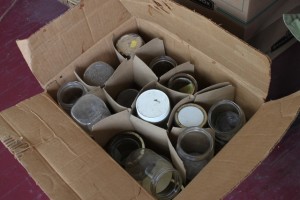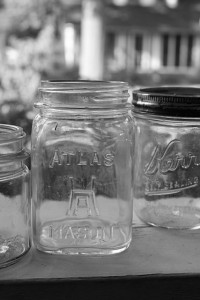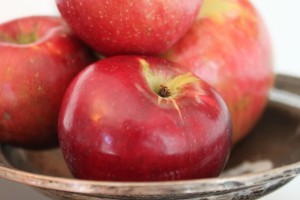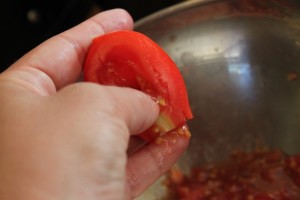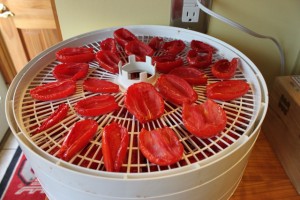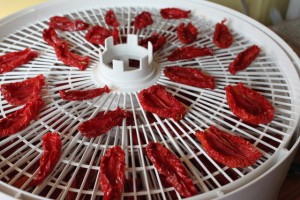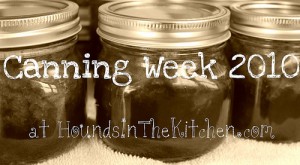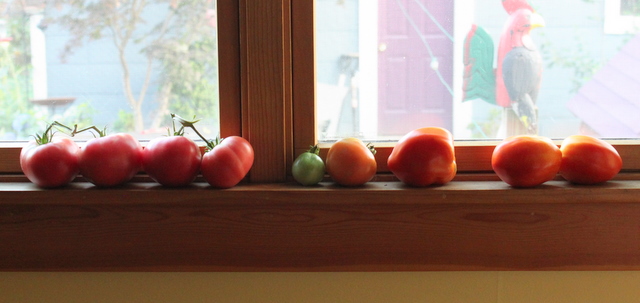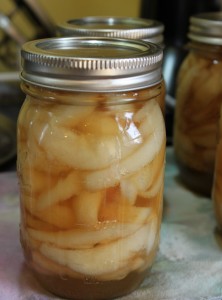 My aunt Deb picked and delivered a large box of pears from her farm. We ate some fresh, but soon the pears begged to be preserved before they rotted.
My thoughts turned to pear sauce and pear butter, but I have a large store of applesauce already in the pantry and I'm not sure I would enjoy pear butter. Then I considered, what about brandied pears? They contain alcohol, which puts them head and shoulders above most canned fruits in my book.
My aunt Deb picked and delivered a large box of pears from her farm. We ate some fresh, but soon the pears begged to be preserved before they rotted.
My thoughts turned to pear sauce and pear butter, but I have a large store of applesauce already in the pantry and I'm not sure I would enjoy pear butter. Then I considered, what about brandied pears? They contain alcohol, which puts them head and shoulders above most canned fruits in my book.
I searched my regular Internet sources and found plenty of recipes but they all required refrigeration. My fridge is full, thanks.
The gold standard, the Ball Blue Book Guide to Preserving, has one recipe that sanely recommends pantry storage. I modified it just a bit by adding a few spices and adjusted quantities for the 8 pounds of pears I had versus the 10 pounds in their recipe.
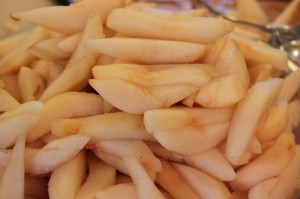 Peeling, coring and slicing the pears consumed about an hour of time.
Peeling, coring and slicing the pears consumed about an hour of time.
Then the pieces bathed in a sugar syrup gently flavored by whole allspice and clove.
The syrup reduced while I filled sterilized jars with hot pears.
Off the heat, I added brandy to the syrup and poured the liquid over the pears.
Fifteen minutes in the water bath canner and the brandied pears are complete! They are resting in the pantry until I pretty them up for holiday gifts.
Canned Brandied Pears
makes about six pints
adapted from Ball Blue Book of Canning
8 pounds pears (approximately 30 small ones) aged at room temperature until ripe and tasty
1-2 tablespoons lemon juice
4.5 cups sugar
3 cups water
6-10 whole spices like cloves, allspice berries or cinnamon stick, optional
2.5 cups brandy
1. Peel and core pears. Slice. Toss with lemon juice to prevent browning.
2. Heat sugar and water in a large stock pot until boiling. Add spices if you wish.
3. Add pears to sugar syrup and cook at boiling for five minutes.
4. Ladle pears into hot sterilized jars.
5. Meanwhile, continue to boil sugar syrup.
6. Remove syrup from heat. Discard spices.
7. Add brandy to syrup and stir well.
8. Ladle brandy syrup over pears in jars leaving 1/4 inch headspace.
9. Fit sterilized rings and lids onto jars and place in hot water bath.
10. Boil for 15 minutes.
11. Remove jars from water bath and allow to cool completely.
12. Remove rings and wash any syrup leaks off rims. Label the jars and store at room temperature for up to a year.
This post is part of Simple Lives Thursday and Fall Fest.

